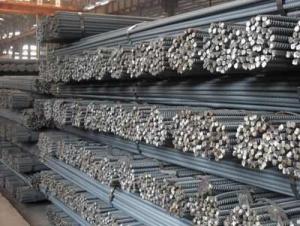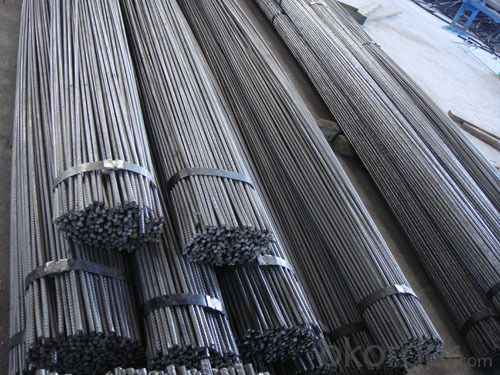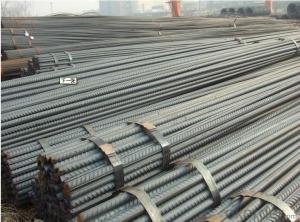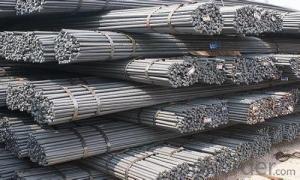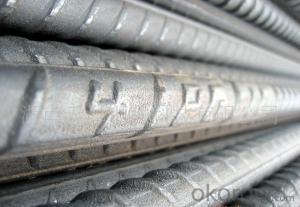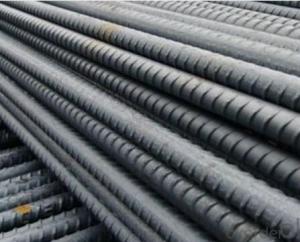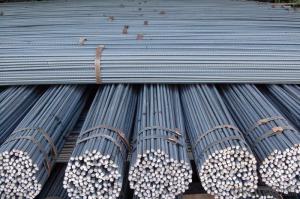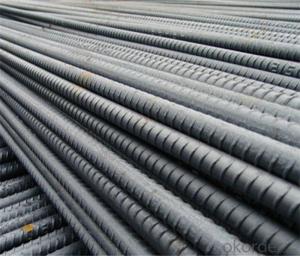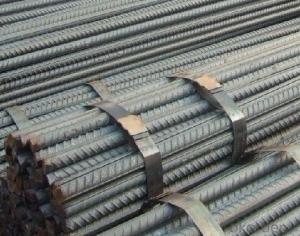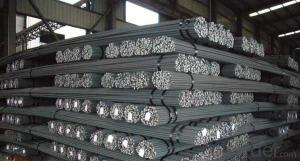0.222kg/m BST500S deformed steel bar for construction
- Loading Port:
- Tianjin
- Payment Terms:
- TT OR LC
- Min Order Qty:
- 25 m.t.
- Supply Capability:
- 100000 m.t./month
OKorder Service Pledge
OKorder Financial Service
You Might Also Like
Product Applications:
Steel Rebar Deformed Bar High Quality Hot Rolled Steel are ideal for structural applications and are widely used in the construction of buildings and bridges, and the manufacturing, petrochemical, and transportation industries.
Product Advantages:
OKorder's Steel Rebar Deformed Bar High Quality Hot Rolled Steel are durable, strong, and resist corrosion.
Main Product Features:
· Premium quality
· Prompt delivery & seaworthy packing (30 days after receiving deposit)
· Corrosion resistance
· Can be recycled and reused
· Mill test certification
· Professional Service
· Competitive pricing
Product Specifications:
Product detail
Deformed Steel
1) Product name: Deformed Steel Bar
2) Standard and grade: a) GB1499-98 HRB335,HRB400,HRB500 b)BS4449-1997 GR460
3) Diameter: 8mm; 10mm; 12mm;14mm; 16mm;18mm; 20mm; 22mm; 25mm; 28mm; 30mm; 32mm; 40mm;
4) Length: 9m, 12m
5) Packing: Mill standard export packing in bundles, 2tons/bundle or 2tons/coil.
6) Country of Origin :China
7) Applications:The products are widely used in construction, road, machinery processing, and welding fields.
8)Delivery Time :Within 20 days.
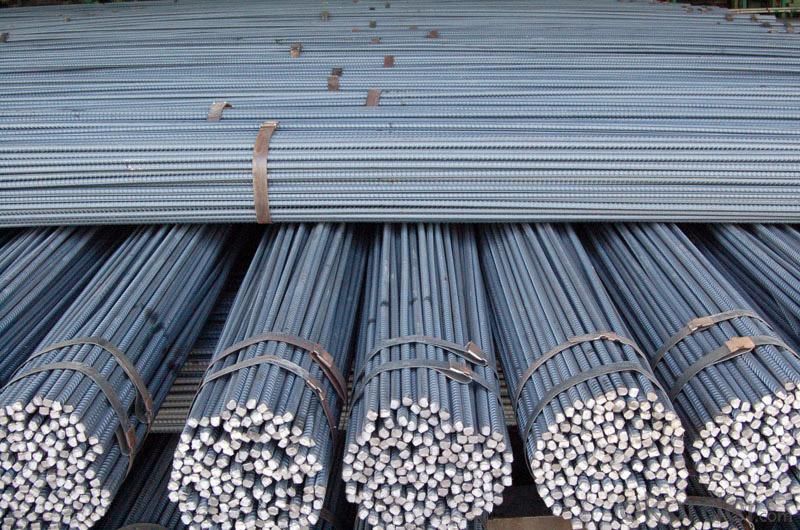
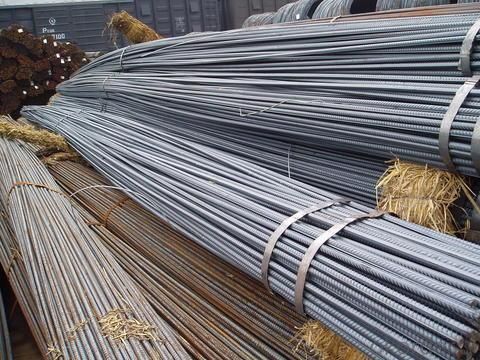
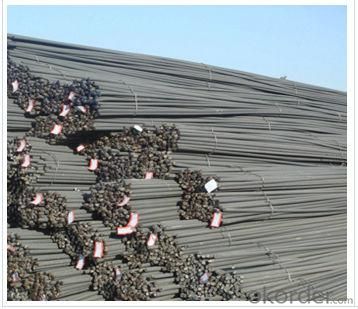
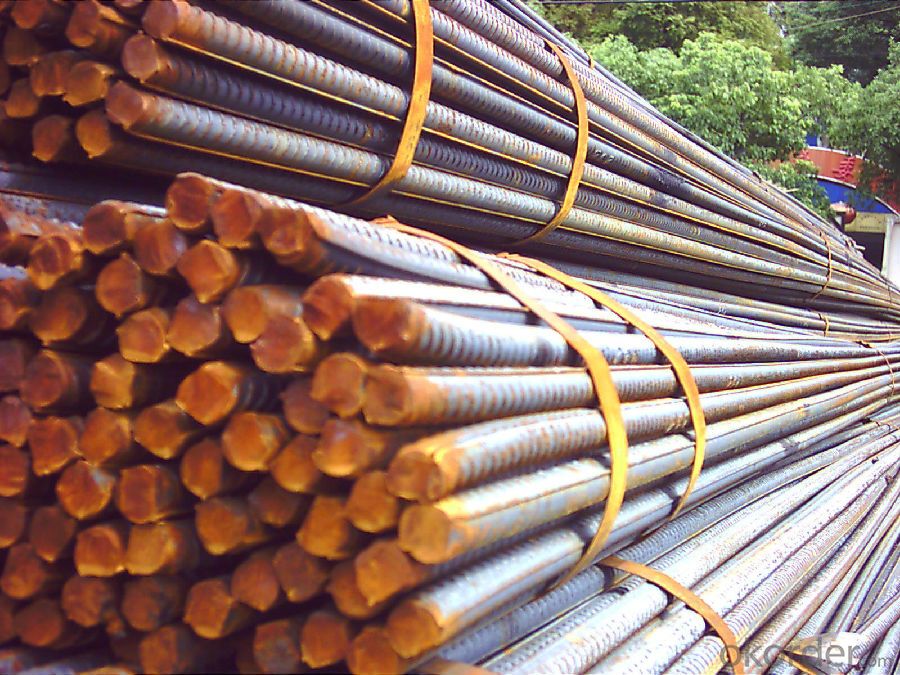
- Q: How are steel rebars measured and cut on construction sites?
- Steel rebars are typically measured using a measuring tape or a steel rule, ensuring accurate lengths are obtained. Once measured, the rebars are cut using a rebar cutter, which is a specialized tool designed to cut through the tough steel material. The cutter may be manual or powered, such as a hydraulic or electric cutter, depending on the size and quantity of rebars being cut. The process involves securely holding the rebar in place and aligning the cutter before applying force to make a clean and precise cut.
- Q: What are the factors that can affect the lifespan of steel rebars in concrete structures?
- There are several factors that can affect the lifespan of steel rebars in concrete structures. These factors include the quality of the steel used, the level of corrosion protection provided, the exposure to harsh environmental conditions, the presence of cracks or voids in the concrete, and the maintenance and repair practices followed.
- Q: What are the guidelines for the proper spacing of steel rebars in beams?
- The guidelines for the proper spacing of steel rebars in beams are determined by engineering standards and codes. These guidelines ensure the structural integrity and strength of the beam. Here are some general guidelines to consider: 1. Rebar spacing: The spacing between rebars should be such that it allows for proper concrete placement and consolidation. Typically, the spacing is measured in terms of rebar diameter or as a percentage of the beam depth. The specific spacing requirements may vary based on factors such as the beam size, load requirements, and design specifications. 2. Minimum and maximum spacing: There are usually minimum and maximum spacing requirements for rebars in beams. The minimum spacing ensures proper concrete cover around the rebar to protect it from corrosion and provide fire resistance. The maximum spacing helps in distributing the loads evenly and prevents excessive cracking of the concrete. 3. Concrete cover: The rebars should be adequately covered by concrete to provide protection against corrosion and provide fire resistance. The concrete cover is the distance between the outer surface of the rebar and the edge of the beam. The required concrete cover is specified in engineering codes and is based on factors such as exposure conditions, durability requirements, and fire ratings. 4. Spacing around supports and openings: Special attention should be given to the spacing of rebars around supports such as columns and walls, as well as around openings like doorways or windows. These areas may experience higher stresses and require additional reinforcement. Engineering codes provide specific requirements for these situations, taking into account the size and shape of the supports or openings. 5. Lateral and longitudinal reinforcement: In addition to the spacing of rebars along the length of the beam (longitudinal reinforcement), beams may require additional reinforcement in the form of stirrups or ties (lateral reinforcement). These elements provide resistance against shear forces and help in preventing diagonal cracking. The spacing and size of these additional reinforcement elements are determined based on the design requirements and load conditions. It is important to note that the specific guidelines for spacing of steel rebars in beams may vary depending on regional building codes, project specifications, and engineering standards. Therefore, it is crucial to consult with a qualified structural engineer or refer to the applicable building codes and design documents for accurate and up-to-date guidelines.
- Q: What is the role of steel rebars in bridge construction?
- The role of steel rebars in bridge construction is to provide reinforcement and strength to the concrete structure. Rebars are embedded within the concrete to enhance its ability to withstand tension forces, increase durability, and prevent cracking or failure. They help distribute the load across the bridge, ensuring its stability and longevity.
- Q: What is the elongation of steel rebars?
- The elongation of steel rebars refers to the amount of deformation or stretching the rebars can undergo before they reach their breaking point.
- Q: Can steel rebars be used in tunnel construction projects?
- Yes, steel rebars can be used in tunnel construction projects. Steel rebars are commonly used as reinforcement in tunnel construction due to their high strength and durability. They help enhance the structural integrity of the tunnel by providing additional support to withstand various loads and ground conditions. Additionally, steel rebars can be easily bent and shaped to fit the required design specifications of the tunnel, making them a preferred choice in tunnel construction.
- Q: Can steel rebars be used in water treatment plants?
- Yes, steel rebars can be used in water treatment plants. Steel rebars are commonly used in the construction of various structures, including water treatment plants, due to their high strength and durability. However, it is important to ensure that the steel rebars are properly coated or protected to prevent corrosion from the exposure to water and chemicals commonly found in water treatment plants.
- Q: How do steel rebars affect the shrinkage and creep of concrete?
- Steel rebars play a significant role in mitigating the shrinkage and creep of concrete. The presence of rebars helps to improve the tensile strength of concrete, which reduces the occurrence of cracking and shrinkage. By providing reinforcement, steel rebars restrict the movement of concrete, minimizing the risk of shrinkage and creep over time.
- Q: Can steel rebars be used in cold weather construction?
- Yes, steel rebars can be used in cold weather construction. However, it is important to take certain precautions and follow specific guidelines to ensure their effectiveness. For instance, rebars should be properly stored and protected from moisture to prevent rusting. Additionally, concrete should be mixed and cured at appropriate temperatures to prevent cracking or weakening of the rebars. Overall, with proper planning and execution, steel rebars can be successfully utilized in cold weather construction projects.
- Q: How are steel rebars manufactured?
- Steel rebars are manufactured through a process called rolling, where steel billets are heated and passed through a series of rollers to shape them into the desired rebar sizes and profiles. This process ensures the rebars have the necessary strength and durability for construction purposes.
Send your message to us
0.222kg/m BST500S deformed steel bar for construction
- Loading Port:
- Tianjin
- Payment Terms:
- TT OR LC
- Min Order Qty:
- 25 m.t.
- Supply Capability:
- 100000 m.t./month
OKorder Service Pledge
OKorder Financial Service
Similar products
Hot products
Hot Searches
Related keywords
